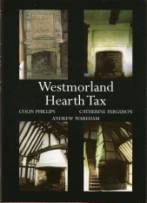The Hearth Tax Series

by Catherine Ferguson (General Editor, Hearth Tax)
In 1995 the British Record Society joined with the Roehampton University Centre for Hearth Tax Research to publish a series of the texts of the hearth taxes of the 1660s and 1670s.
In 2004 this project was adopted as a British Academy Research Project.
'a truly pioneering project of national relevance and importance '
(Vernacular Architecture 37, 2006, 147)
The Hearth Tax Project
The aim of the Hearth Tax Series is to provide a national survey of population, households and their relationship with social and economic status in Restoration England and Wales. The Hearth Tax Project uses volunteers and palaeographical consultants to transcribe hearth tax documents, and consultants skilled in GIS and statistics to present the data. The initial stated aim of the Project was to publish the best unpublished return for the county in question. Since then, however, the Hearth Tax Project, encouraged by the British Academy, has extended its scope. Multiple lists, where one list does not provide comprehensive coverage, are going to be our future goal. At the same time, the use of exemption certificates continues as an area of interest to the Hearth Tax Project. For more information about the British Academy Hearth Tax Project please visit www.roehampton.ac.uk/hearthtax
The volumes
The volumes are being produced county by county, generally in conjunction with the relevant local record society. Each volume publishes the full text of the selected hearth tax document together with a scholarly introduction complete with maps and tables. In this way they make available lists of householders, and the number of their hearths, village by village across England, making them useful to social and economic historians working on a national canvas as well as to the local historians of the counties concerned. When the mapping and analysis is completed, it will provide a bird's-eye view of the distribution and density of taxable population in England and Wales in the 1660s and 1670s. Each volume is fully indexed by name, place and subject, contains coloured and black and white maps and plates.
The historical introductions
Each volume contains a scholarly introduction, often by more than one historian. Typically there will be an explanation of the nature and collection of the tax in that county; the historical analysis of the hearth tax document published, and a social and economic context. They also discuss the light that the document throws on the vernacular architecture of the county, on the basis that it is not useful to count hearths without some awareness of the houses that contained them.
The documents
Each volume publishes the relevant transcribed document, trying to retain the format and integrity of each document. The initial stated aim of the Project was to publish the best unpublished return for the county in question. Since then, however, the Hearth Tax Project, encouraged by the British Academy, has extended its scope. Multiple lists, where one list does not provide comprehensive coverage, are going to be our future goal. At the same time, the use of other sources, such as exemption certificates, continues as an area of interest.
Uses of the hearth tax documents
'an outstanding resource for historians of England and Wales'
(The Local Historian 32.4, 2002, 257).
Obviously, the number of names varies county by county, but whatever the size, hearth taxes can be especially useful for locating lost ancestors, since they can pin down which parish registers are worth searching, whilst the house size gives some sort of indication of the status of the taxpayers themselves. The documents are naturally ideal tools for local historians, and provide the opportunity of setting the community being studied in context.
The University of Roehampton, with the assistance of a grant from the Heritage Lottery Fund, had master microfilm made of the Hearth Tax listings in the National Archives, which, in turn, has made copies of the relevant portions available to every appropriate local record office in the country.
